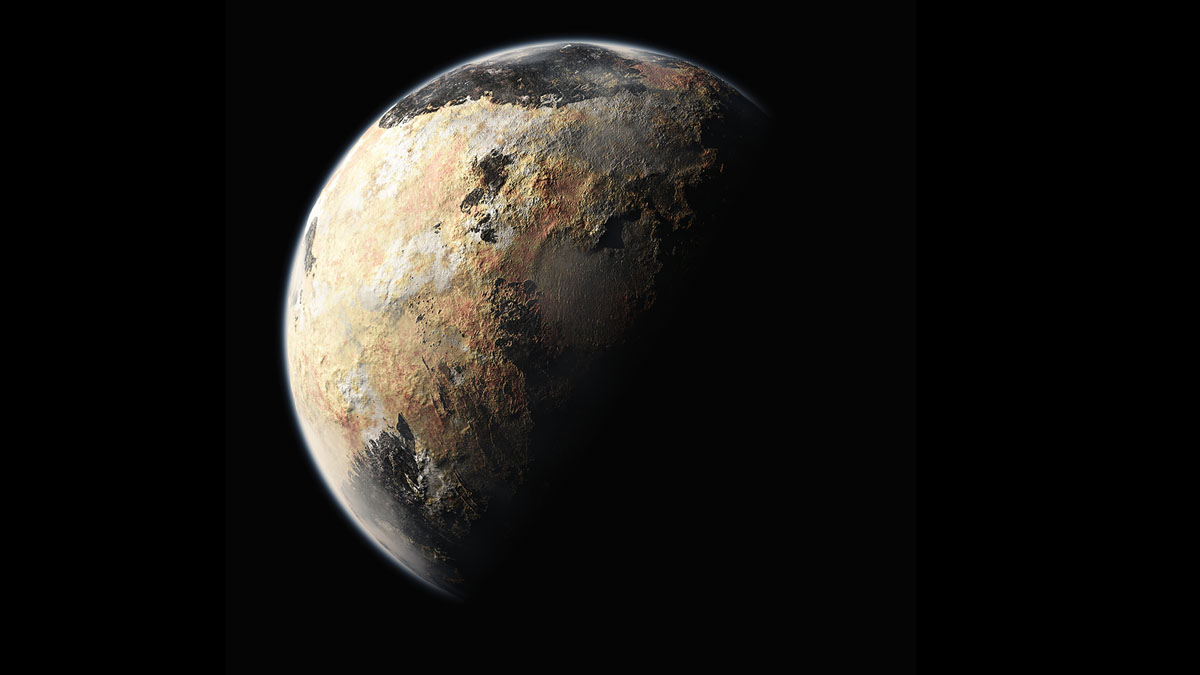hey, what’s a world like you doing in a solar system like this?

According to some people, Pluto never stopped being a planet. While there was acrimony when the new definition was approved by the IAU, after a while it seemed that people got used to the idea that maybe, certain planet-like objects shouldn’t be called planets after all. However, as we approach Pluto with the fastest spacecraft ever built to study worlds like it, the person in charge of the mission’s science, Alan Stern, insists that it’s a planet and those who defined it otherwise lack a persuasive argument to call it anything else.
According to him, if we start applying IAU’s definition to current planets, none would qualify because they can’t clear out their orbits and all have various stellar bodies crossing paths with them or following in their orbital wake. Jupiter is not even a proper planet because it attracts so many comets, Neptune can’t be a planet thanks to the fact that Pluto crosses its orbit, and Earth has a cloud of asteroid debris following it. And if none of these spheres is a planet, then what exactly is? But the catch here is that Stern may be emphasizing the letter of the definition over its spirit to score a rhetorical buzz-worthy point.
While he correctly says that a definition that could lead to hundreds of planets in our little solar system alone shouldn’t bother us because science is science and we need to call things as they are, rather than change definitions solely for the sake of convenience and textbook publication, how he interprets the requirement to clear one’s orbit is suspect. There’s math involved in how one determines if a planet cleared its orbital neighborhood and what is meant by cleared, and it should be pointed out that Stern co-authored a paper that contributed greatly to this concept in the first place some 15 years ago.
Nowhere does it state that a planet must have a pristine orbit because such a thing is physically impossible in most solar systems. Instead, the idea is that it’s the dominant body in its orbit, and has enough scattering power to send incoming bodies away, which isn’t a perfect definition and could cause some semantic headaches in certain cases, but hardly as absolutist as Stern makes it sound. And the IAU debate raises a valid point. If we call anything round and orbiting a star a planet, how many planets would we have? At what point is there a difference significant enough between planets to require us to rethink the definition?
For what it’s worth, Stern does have an answer to that. Despite raging and fuming about how it all went down at the IAU meetings, he doesn’t want to get rid of the term dwarf planet. But in his mind, that’s just another type of a planet along with numerous other classifications he offered in his paper trying to define any planet’s orbital dominance. He sees us categorizing planets much like we do stars, from dwarfs to hyper-giants based primarily on mass, and each world falling at a certain point along a planetary Hertzsprung-Russell diagram.
So what if we identify Ceres and Eris along with a whole host of Kupier Belt Objects as planets as long as they orbit the sun and have enough mass to become round? So what if we end up with 3,000 planets? Isn’t that better than arbitrarily drawing a cutoff at a number we can easily memorize solely for the purposes of nomenclature in classrooms? As we see with extrasolar systems, planets are weird things in all sorts of erratic orbits, so perhaps, how we define what is and isn’t a planet should reflect that in our literature. Plus imagine how big and colorful our model solar systems would get…





